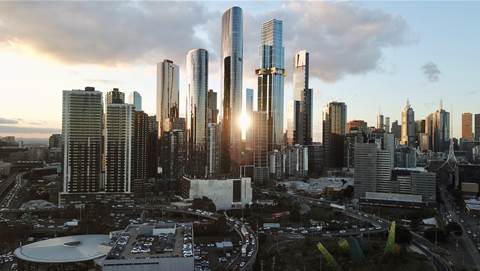Vodafone will still build a standalone 5G network with an initial 650 sites in seven Australian cities and regions, a proposition it says will be considerably strengthened once its $15 billion merger with TPG is finalised.

Immediately after the Federal Court ruled the Vodafone-TPG merger could proceed, Vodafone unveiled plans and cell location maps for its 5G network, which will use Nokia equipment.
“The initial rollout plan [is for] 5G sites... in Sydney, Melbourne, Brisbane, Adelaide, Perth, Canberra and the Gold Coast,” Vodafone said in a statement.
“There are more than 650 sites being planned right now, with sites progressively going live from mid-2020.
“Our current plan is to have several thousand 5G sites in our network and our rollout plans will include more and more 5G sites each year in these areas.”
The company published its initial 5G maps here.
Speaking after the court ruling, Vodafone CEO Iñaki Berroeta said the combined Vodafone-TPG entity would create “a stronger player in the market with the ability to enter quickly 5G”.
“All the plans that we have thought about - everything that we want to do on 5G and the things that we can do with the fibre and spectrum of TPG ... becomes now something that is more of a reality,” Berroeta said.
“[But] we will obviously not do anything jointly until this thing is fully clear and we are able to combine both companies together.
“We do have standalone 5G plans and these are the plans that we're working on. We have significant investment projected for this year on that but obviously, as a merged company, the ability [to do 5G] is even higher.
“I think that we are going to go very quickly now into a 5G rollout. We are confident that we can not only catch up but even surprise our competitors if we are able to get it over and just do our work.”
Berroeta confirmed the standalone 5G investment would come entirely from VHA.
In addition to TPG’s dark fibre and mobile spectrum holdings, Berroeta also said that TPG’s small cell infrastructure was another exciting prospect to be added to a combined mobile network.
“There are several hundred small cells across metropolitan Australia that will provide significant benefit in terms of capacity,” he said.
“That is also a relatively inexpensive exercise to integrate this infrastructure and we will be doing that as soon as we can.”
Berroeta said that 5G would initially be deployed to areas of Australia with the highest demand for mobile broadband services.
While the plan is to commercially launch in mid-2020, “we will have customers being able to test 5G in certain areas before that,” Berroeta said.
A combined Vodafone-TPG entity would also need to consider how it positioned 4G and 5G services to the market.
However, Berroeta indicated that he did not see an ability to charge a premium for 5G services, a model that rival Telstra has indicated it intends to use.
“I started in this industry back in ‘95. At that time, we were very happy that we were launching GSM, which was called 2G, and everyone was saying that every new technology is going to be a premium,” he said.
“I haven't seen that ever. Mobile communications and mobile infrastructure is an extremely competitive market.
“Regardless of the intentions that different people in the market say, I think that what 5G gives us is the opportunity to deliver more to customers in a more efficient way. I see it very difficult that this turns into a premium.
“5G does allow for additional services and additional sources of revenue and this is an area where I think that the growth of 5G comes much more than charging the higher monthly access fee.”
Berroeta also addressed the mobile competition question upon which the Australian Competition and Consumer Commission’s (ACCC’s) continued opposition to the Vodafone-TPG merger is based.
The ACCC opposed the merger because it believed - and still believes - that Vodafone and TPG have the resources to run separate mobile networks, and that four operators in the market would be better than three.
This was refuted by Justice Middleton, who argued that the quality of competitors was more important than the number.
Berroeta added to that that it was not a given that even a standalone Vodafone could have built a 5G network that could rival that of Telstra or Optus.
“In the real world, when it's a matter of having people that can deliver a similar level of service or competing level of service, a future with only two 5G players doesn't look good,” he said.
“I think that now we have a confirmation that there will be three as-strong 5G players and that ultimately means more choice for customers.
“That is good for our customers because they will be having 5G earlier than it would be as standalone, but also it's good because a lot of Telstra customers and Optus, we will welcome them when they come to our company.”



















.png&h=141&w=208&c=1&s=1)

